Discover the names of 18 best climbing and vining vegetables for containers. These veggies are productive and can grow vertically!
1. Rocoto Pepper

This South American perennial pepper plant is something between a climber and a shrub. The best part is, it can live for a decade, producing fruits productively. While it looks like bell pepper, it surely has rich-hot taste.
Rocoto grows best in warm weather but it’s more cold hardy than many other pepper cultivars. You can grow it in a large pot and move it to a protected area in winters in a cold climate. And, if you live in a frost-free area, don’t worry.
2. Nasturtium

Edible and ornamental, nasturtiums are known for their tasty, color-saturated flowers and vibrant shield-shaped leaves that have a pleasant peppery and a mustard-like flavor.
Good for salad decoration, nasturtium is easy to grow in containers. It develops at a rapid pace once planted and start flowering within four to six weeks.
3. Climbing Tomatoes
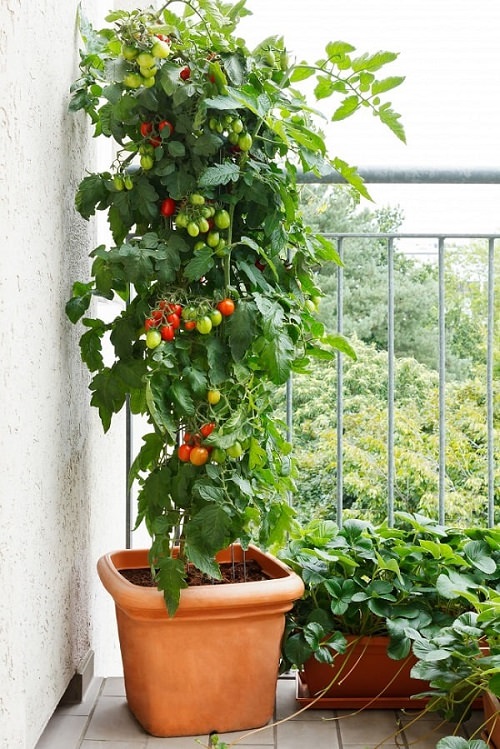
Anyone with a green thumb will tell you how rewarding it is to toss slices of fresh, home-grown tomatoes in a plate of salad or to eat it any other way.
There are many varieties of tomatoes that follow vinelike growing habit. We posted a great list of tomato varieties for containers, so look at it to decide!
4. Malabar spinach
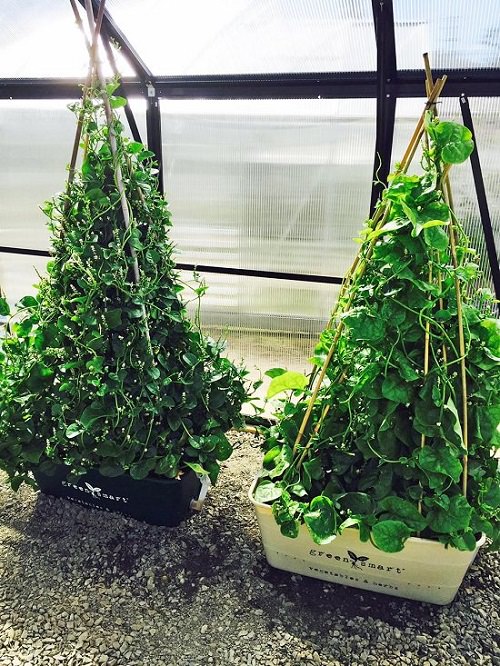
An ideal provider of leafy greens–Malabar spinach multiplies well, it is so productive even in containers that it never stops producing in favorable growing conditions. Despite being a tropical perennial, it performs well in milder climates.
Start the seeds indoors and wait until the last frost date before transferring outdoors. As time marches, the plant gets overly bushy, and you may need to harvest it intermittently and provide solid support to the vine for optimal growth.
5. Loofah
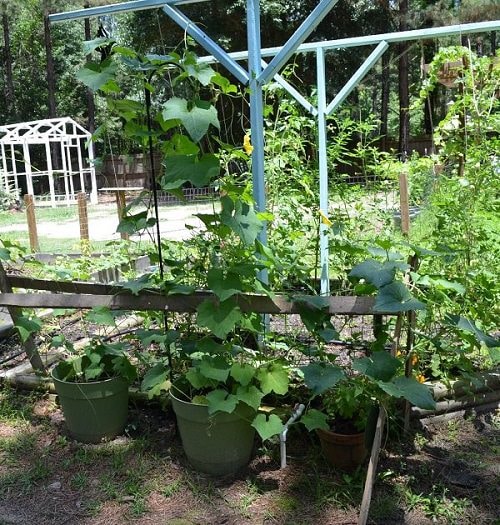
Loofah has long been used as a natural sponge than as food. Nevertheless, it’s still extremely useful in both these cases. Harvest of nascent loofah gourd yields delicious vegetable that can be cooked, like summer squash.
In addition to its medicinal benefits, there are many delicious curry recipes available on the web, if you search a little. This hot weather gourd can also be grown in large containers.
6. Chayote
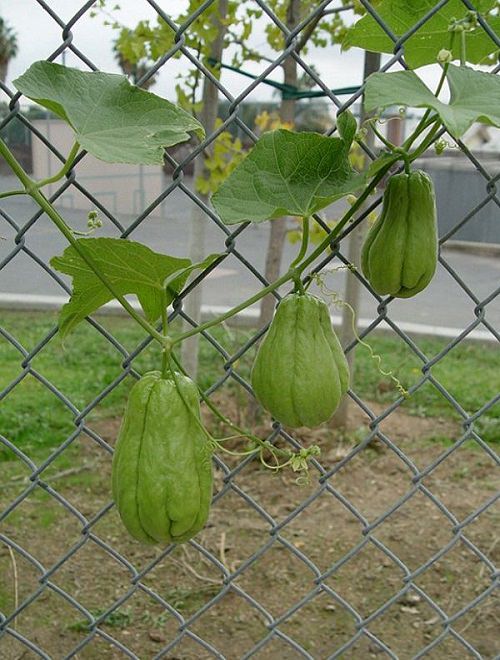
Chayote produces cool looking pear-shaped, pale-green fruits that are akin to pumpkin and grow well in subtropical environments just as well as moderately cool climates.
Growing chayote in a container is a good idea for people living in short-summer regions as these incredibly productive vines can be brought in a protective area once the temperature turns cool.
7. Pumpkin

Growing pumpkins in containers is possible; you’ll need a large container and the right soil blend. Pumpkins require a sunny position, moist soil, and shelter from the harsh, cold wind.
Smaller varieties of pumpkin, including Baby Pam, Small Sugar, and Spooktacular adapt well to the container culture and yield miniature five-pound fruits that are easy to harvest and largely resistant to common insects and pests like aphids and squash bug.
Learn how to grow pumpkin in pots here
8. Pole Beans
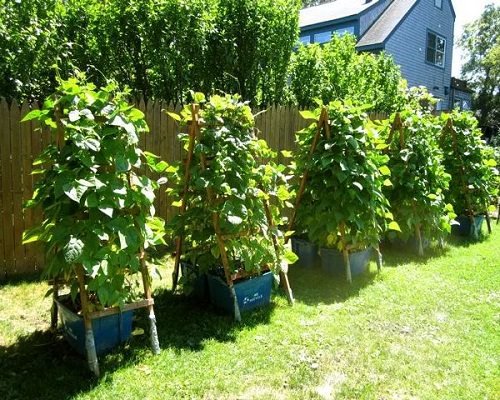
Pole bean vines grow to a convenient height of about 10 feet, making it a suitable vegetable to grow in large pots and buckets, even in balconies. Some of the best bean varieties for pots are here!
Growing beans in containers is particularly useful for starting early when the soil temperatures are too cool to support the growth of this warm-season vegetable. Like most bean species, pole beans resist transplanting and hate when the temperature dips pretty low.
9. Runner Beans

One of the most productive vegetables for limited space gardeners, runner beans are often used for their ornamental blooms, though they also produce edible leaves, green pods, and dried beans.
They rely on plenty of water, full sun, and fertile soil to survive well. Runner beans are good for mild regions without extremes of heat or cold. They can also tolerate light shade and wet climate. It’s advisable to pick the beans small while they are still delicious and tender.
10. Peas

Peas are one of the best vegetables to grow in pots. They grow rapidly and don’t demand too much attention. Also, they are rather forgiving of climatic conditions and don’t depend on the full sun and perform well even in partial shade.
However, they do benefit from regular watering and fertile soil. Since peas prefer cool conditions, it’s best to plant them early on in the season in the spring and sometimes in the fall. In warmer regions with the mild winter season, grow peas in winters!
11. Cucumbers
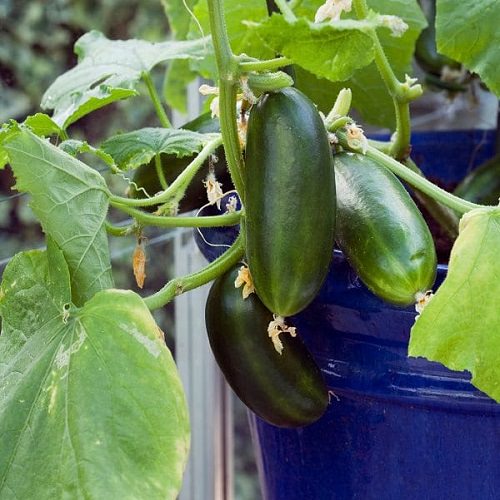
Cool and crispy, cucumbers are warm-season vegetables that thrive best when there is a rise in temperature. The compact, moderately long vines make them suitable for container growth.
Certain varieties perform better in containers than others. Excellent options in choosing cucumbers for pots include the bush varieties such as Salad, Hybrid, and Picklebush. You can learn about the various types of cucumbers here.
12. Bitter Melon
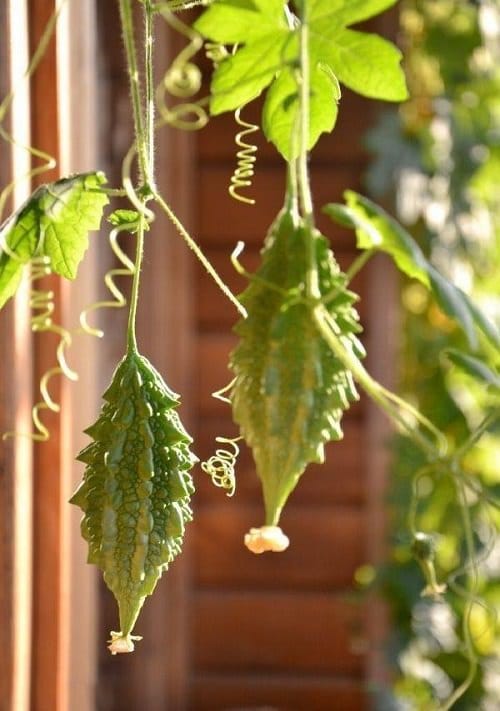
Bitter Melon is one of the most popular vegetables grown in South-East Asia. Like cucumber, melon, or pumpkin–it belongs to the gourd family. A native of the Indian subcontinent, it is used in Asian delicacies.
It is one of the healthiest vegetables on the planet and has many medicinal and culinary uses. It has a uniquely bitter and crunchy taste that is found in no other vegetable.
13. Perennial Cucumber
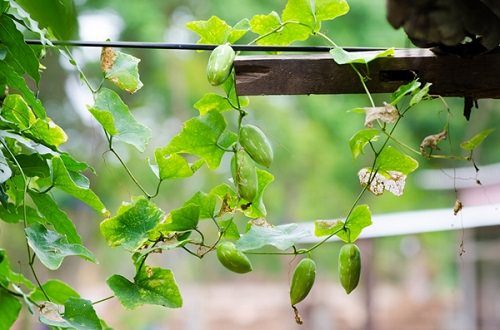
Also known as ivy gourd, it is one more climbing vegetable to grow in pots. This aggressive grower is popularly grown in Asian and African countries for miniature cucumber-like vegetables. You can consume it raw in salads or cook to make delicious curries.
It’s perennial in warm climates (USDA Zones 9-11) but can be grown as an annual in colder regions. Learn everything about planting ivy gourd here.
14. Broad Beans
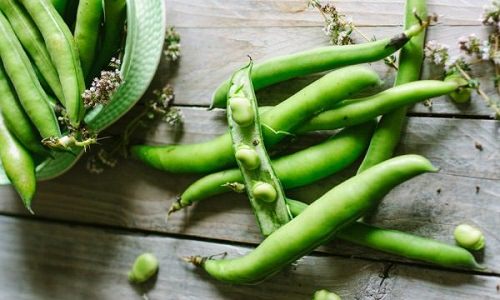
Broad beans or fava beans grow like bush beans and resemble peas like pods. They are not very popular and so are not very easy to come by.
However, the good news is that they can be grown in cool temperatures just like bush beans. Also, they lack a deep root system and are not very demanding when it comes to moisture or nutrients.
15. Summer Squash
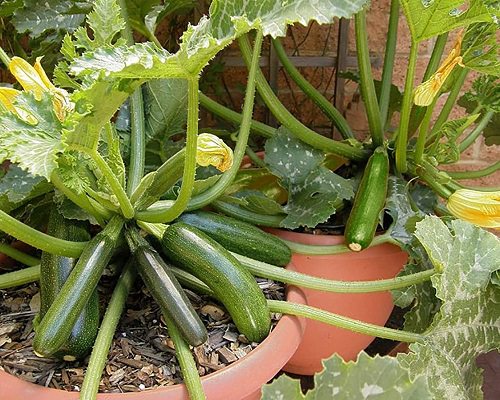
Summer squash covers squash types like zucchini, straight neck squash, and crookneck squash. These develop fruits quickly after the vines spread and form a compact habit that grows to a manageable height of 2-4 feet, thereby making it an excellent choice for container gardeners.
These vegetables also require up to seven hours of full sun daily, in addition to regular watering and a fortnightly dose of organic fertilizer to produce well.
16. Winter Squash
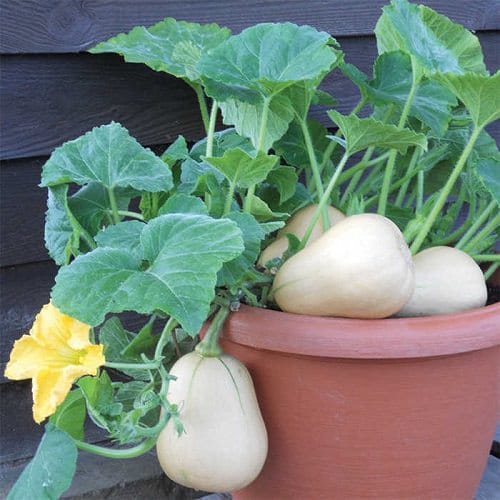
Winter squash comes in a staggering number of cultivars, including acorn, hubbard, as well as butternut squash. These vigorous vines are quick to spread, and thus a little bit tough to manage in a container, however, you can still control these by growing them vertically on a trellis and pruning intermittently.
Additionally, they are cold-sensitive and despise too much water as it increases their susceptibility to seasonal pests.
17. Melons
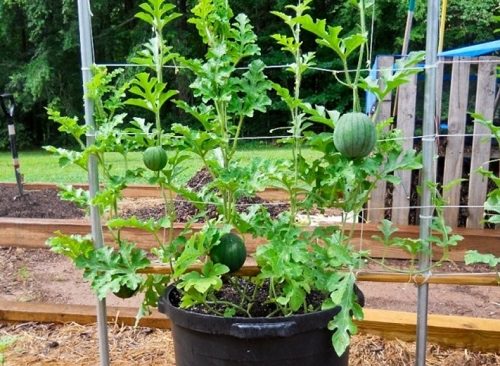
There are many different varieties of melons that grow in a vine form and are remarkably easy to grow in containers. Cantaloupe, as well as sugar baby watermelon, are both adaptive to container culture.
It’s advisable to reduce watering when the melons reach a cricket ball size. To read more tips on growing watermelons, click here.
Note: Watermelon is the official state vegetable of Oklahoma, which is why it’s a part of this list. Also, being a cucumber family plant, many growers around the world consider it a vegetable.
18. Lablab Beans
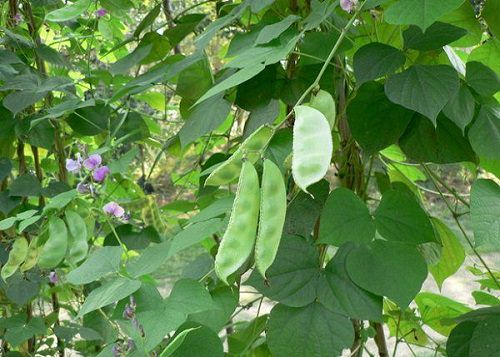
This lesser-known bean is originated in Africa or South East Asia. Popular in many tropical and subtropical countries, it is so delicious and healthy.
This short living perennial can be grown in containers, above 55-60 F (13-15 C) temperature range, usually in summer in cold climates.


